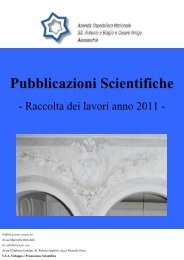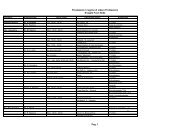Working Paper of Public Health Volume 2012 - Azienda Ospedaliera ...
Working Paper of Public Health Volume 2012 - Azienda Ospedaliera ...
Working Paper of Public Health Volume 2012 - Azienda Ospedaliera ...
You also want an ePaper? Increase the reach of your titles
YUMPU automatically turns print PDFs into web optimized ePapers that Google loves.
<strong>Azienda</strong> <strong>Ospedaliera</strong> Nazionale“SS. Antonio e Biagio e Cesare Arrigo”<strong>Working</strong> <strong>Paper</strong> <strong>of</strong> <strong>Public</strong> <strong>Health</strong>nr. 16/<strong>2012</strong>inputs fixed (output-oriented model), or to minimize inputs, keeping the outputs fixed (inputorientation).Nevertheless, in different fields, such as the environmental industry, there is a problem linkedwith outputs, because one output might be desirable (called “good”, i.e., production in theenvironmental field) and one output might be undesirable (called “bad”, i.e., pollution). Forthis reason, a specification <strong>of</strong> the standard DEA model has been created. The DirectionalDistance Function (DDF) is a non-parametric and deterministic methodology, more flexibleand able to consider good and bad outputs (output approach). The possibility to introduce twocategories <strong>of</strong> outputs with opposite meanings allows us to consider a more thorough concept<strong>of</strong> efficiency because the production <strong>of</strong> a firm – hence, also <strong>of</strong> a hospital – is not alwaysgood. There are different strategies to consider bad outputs, for example by turning them intogood outputs (Scheel, 2001, Prior, 2006). Thanassoulis et al. (2008, pp. 301-304)demonstrate that the production possibility set obtained by treating the bad output as inputand the set obtained by converting the bad output into good by subtraction from a largepositive number are the same. Nevertheless, as explained in the following section, aspecification <strong>of</strong> the DEA methodology, i.e. the Directional Distance Function (DDF), hasbeen adopted in this paper. This technique allows us to build a frontier that considers the twocategories <strong>of</strong> outputs with free and weak disposability assumptions. The literature has alreadyconsidered this point and some applications <strong>of</strong> the DDF to the hospital field can be found. Aninteresting work is provided by Bilsel and Davutyan (2011), who consider mortality as badoutput and find that reducing mortality means sacrificing some good outputs: there is a trade<strong>of</strong>fbetween quality and quantity. In the recent study <strong>of</strong> Wu et al. (<strong>2012</strong>), authors adopt thenon-radial output-oriented directional distance function in order to analyze Taiwan’s hospitalproductivity considering the number <strong>of</strong> readmissions as bad output. They confirm the need toconsider quality factor while measuring hospital’s efficiency/productivity, as previouslyproposed by Arocena and Garcia-Prado (2007). Nevertheless, the directional distancefunction in the healthcare industry has been <strong>of</strong>ten used without considering bad outputs, as inthe studies <strong>of</strong> Dervaux et al. (2009) and Barros et al. (2008). In these works, the DDFmethodology allows authors to jointly maximize outputs and minimize inputs. Also in thesecases, results are related to efficiency as a measure <strong>of</strong> healthcare production, so much so thatauthors consider productivity indexes in order to evaluate hospitals’ performance. Inopposing trend, this study proposes to think about hospitals’ performance as a measure <strong>of</strong>cost efficiency, taking both good and bad outputs into account but simultaneously. This is the4



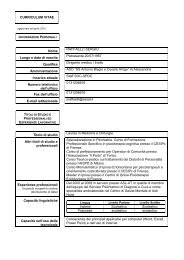
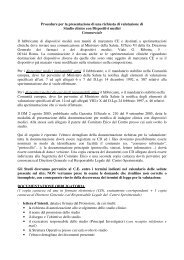

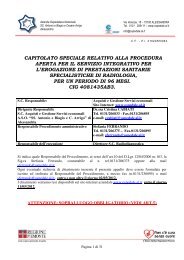
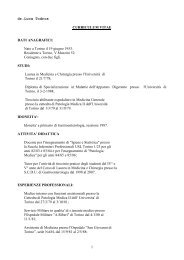
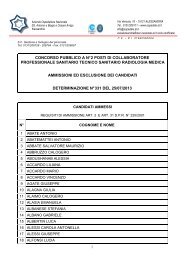

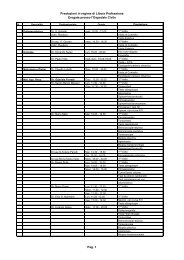


![[torino - 1] lastampa/urc/01 ... 26/10/09 - Azienda ...](https://img.yumpu.com/44058002/1/190x32/torino-1-lastampa-urc-01-26-10-09-azienda-.jpg?quality=85)

